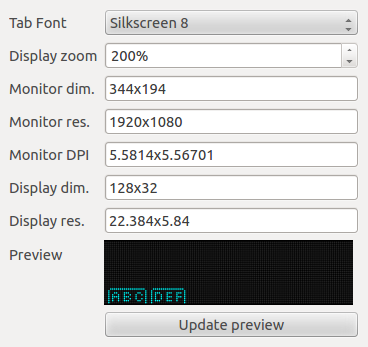A few days ago we featured the USBPass, an offline password keeper made with very few components. At the end of our write-up we mentioned that [Josh] was already working on another version of his hardware, which involved adding an OLED screen to the platform. To help him pick one he created QtLedTest, a Qt-based tool that simulates different OLED displays and GUI layouts for them. Internally QtLedTest is composed of QLedMatrix (a widget that simulates LED matrices), an SSD1306 OLED controller simulator, a simple graphics drawing library and some functions to draw text on the simulated screen. [Josh] used Fontbuilder together with a program he made in order to convert fonts he had found on the internet to C files. All the source code [Josh] made can be found on Github and should be updated in coming weeks as the final program is a bit slow to render the simulated screens.
3 thoughts on “QtLedTest – Software To Evaluate OLED Displays”
Leave a Reply
Please be kind and respectful to help make the comments section excellent. (Comment Policy)

















This is my favorite part of designing something new. The process of designing software and hardware test jigs and mockups to help me choose what to use when I finally design the original piece I’m trying to build. Good work!
This is the kind of thing that I wished microcontroller development environments supported. When using AVR studio (version 4 was the last one I tried this with), it was great to debug my applications using the simulator. But what it lacked was the ability to create my own “simulator components”. Things like that OLED display would speed up development time if it could be connected to the simulated microcontroller.
Definitely! I wonder if any AVR or ARM simulators out there provide hooks/plugins for developing such extensions?